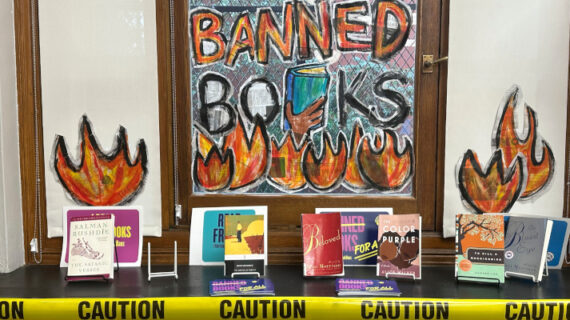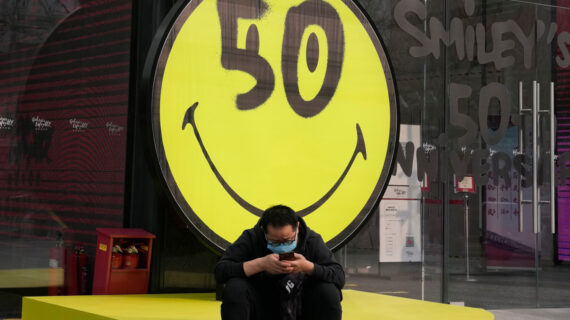When they began investigating the COVID-19 pandemic, Matt Ridley, the bestselling science writer, and Alina Chan, a molecular biologist at the Broad Institute of MIT and Harvard, both presumed the virus spilled over into humans from wildlife.
In fact, that’s how SARS started in 2003 and the ground zero of the current pandemic was Wuhan, China, which hosts a bustling seafood market. Many of the first cases were people who worked or visited the market.
Over the course of the last two years, though, the case for a natural spillover event has looked less solid, while evidence for another theory has steadily assembled. The lab leak hypothesis, initially viewed as a conspiracy theory and the subject of innumerable scornful “fact-checks” in the media, has become more plausible.
“We both began thinking that it was probably the natural spillover event. And gradually, as the evidence has accumulated in favour of the lab leak and against a wildlife market event, we’ve come to the conclusion that the lab leak is slightly more probable,” said Ridley, at a webinar hosted by the Macdonald-Laurier Institute on Thursday.
In their new book Viral: The Search for the Origin of COVID-19, Chan and Ridley don’t pretend to make a definitive case that the lab leak theory is true, but they present a mountain of evidence that shows it’s just as likely as zoonotic transmission.
“If you look at all of the available evidence, there’s a wall of circumstantial evidence for both origins: natural or from a lab. And the fact remains that there’s no dispositive evidence,” said Chan, at the webinar.
“So there’s no smoking gun pointing to either one,” she said.
The Variants
It’s important to identify the different variants of the lab leak theory.
The first version, which caused endless controversy in the early days of the pandemic, is the idea that the virus is a Chinese bioweapon that was released, either accidentally or deliberately, by a reckless or malevolent government. This version of the theory has spawned its own variants, with one Chinese spokesperson alleging the virus was a U.S. bioweapon and Palestinian media alleging it was an Israeli-U.S. bioweapon.
The other version of the theory, that the virus was accidentally leaked from a lab, is more plausible, if only because it has happened many times before.
Chan and Ridley devote a chapter of the book to detailing previous lab leaks and point out that, after the original SARS outbreak, that virus escaped from labs multiple times, including several times in China.
The question facing Chan, Ridley, and the rest of the world is whether SARS‑CoV‑2, the virus that causes COVID-19, jumped to humans from animals; whether it was retrieved deliberately from an animal by scientists and then escaped from a lab; or whether it was retrieved from an animal and tinkered with by scientists in a lab before accidentally being released from the lab.
The question isn’t just academic. Without learning these lessons, “we are playing Russian roulette in the future with some kind of threat that we don’t understand,” said Ridley.
And there are already lessons for scientists and the media about their initial reluctance to take the lab leak theory seriously.
“Scientists and journalists in each country also need to have some introspection and see how flaws in the (scientific) reporting system and the news reporting system have been exploited to cover up an entirely plausible scientific hypothesis for close to two years,” said Chan, at the webinar. “Even today, there has been no proper investigation of the lab origin hypothesis.”
In an interview with The Hub, Chan said the main culprit preventing scientists from properly considering the lab leak theory is “groupthink,” and Ridley described a system in which “vested interests work against new ideas.”
Other critics have been more explicit, describing a fear among some scientists that giving too much credence to the lab leak theory might encourage a moratorium on gain-of-function research.
This kind of research is the controversial practice of making existing viruses deadlier or more contagious in order to learn how to defend against them. Due to the obvious risks, this kind of experimentation has been the subject of criticism and even bans. It was also the subject of a fiery exchange between U.S. Senator Rand Paul and Anthony Fauci, the chief medical advisor to the president of the United States.
“We both probably lean towards the idea that this was still an actual virus that just happened to be collected in the laboratory, perhaps, and then leaked out through an accident,” said Ridley. “It may well have been engineered before it was released.”
This tendency for the scientific debate to get sucked into the partisan culture war has also been partially responsible for the lack of mainstream consideration of the lab leak theory.
Chan, who was approaching the theory purely on scientific terms, was called a “Trumpist” and a bigot for her work. The reaction to the book has continued in this vein, with a scorching reaction on social media and the Guardian newspaper ominously warning that Ridley is a Conservative in its review of the book.
The lab leak hypothesis
Viral reads like a murder mystery, but it’s a thriller without a firm resolution.
What Ridley and Chan present is a mountain of circumstantial evidence in favour of the lab leak theory and a genuine bewilderment that journalists and scientists seemed so intent on ignoring it while the pandemic spread.
The mystery starts in 2012, when six Chinese miners contracted severe pneumonia while clearing bat guano from a cave. Three of the miners died and the virus that killed them was sequenced in the Wuhan Institute of Virology, where it was found to be a coronavirus similar to SARS.
Nearly a decade later, at the beginning of the COVID-19 outbreak, the Sars-Cov-2 virus was found to be a 96.2 percent genetic match to the virus that infected the miners and ended up in the Wuhan lab. That fact was not publicized by Chinese researchers in the early days of the pandemic and it was later revealed that sometime after the original virus arrived at the lab in Wuhan its name was changed, causing the trail to go cold.
As Ridley and Chan write, it might be a coincidence. But then again, it might not be. Anyone investigating the origin of the virus would want to be aware of these facts that appear to have been concealed after stern directives were issued by the Chinese government.
Although Chinese officials originally looked to the seafood market in Wuhan as the likely origin of the outbreak, all of the animals in the market tested negative for the virus. Thousands of more animals in China have tested negative, with the only positive results coming from a handful of pangolins, an animal that is not sold at the seafood market in Wuhan.
It now seems more likely that the virus was circulating well before December 2019 and that the seafood market was actually the first human super-spreader event, rather than the origin of the virus among humans.
Chan and Ridley also point out that the Sars-Cov-2 virus seems strangely well-adapted to humans from the moment it was circulating in Wuhan in December 2019
This, along with the other evidence in Viral, paint a picture of a hypothesis that is, at the very least, plausible.
“I’ve been really surprised to continue encountering people who think that the lab origin theory is a conspiracy theory, because right now, even the U.S. intelligence community has said it is a plausible origin of COVID-19,” said Chan.
The amateur sleuths
In a conversation with The Hub, Ridley and Chan repeatedly lauded a group of amateurs who had tirelessly ferreted out clues about the origins of the virus.
For example, the similarity between the virus found in the bat cave and Sars-Cov-2, which causes COVID-19, was only made public because one of these internet sleuths found an unpublished master’s thesis about the six Chinese miners.
They mostly organized on Twitter, because Facebook flagged these kinds of discussions as misinformation and Reddit simply deleted them.
Again and again, the amateurs uncovered evidence that journalists and scientists had missed. Like Chan, they were disparaged until so much evidence piled up that it was impossible to ignore them.
“The people who did do a good job were amateurs. They were open source analysts, some of them scientists, some of them not,” said Ridley at the Macdonald-Laurier Institute webinar. “They were people who knew how to search the internet to find obscure documents, theses, entries into genetic databases, grant proposals, things like that, and find them in China or elsewhere and uncover them and show them to the world.”
Focus on the science
Despite these obvious flaws—the groupthink among scientists, the culture war that sucked in the world of public health, and the closemindedness from experts—Ridley doesn’t see it as an existential threat to the scientific world.
“I think the impact of this debate on public confidence in scientists and the scientific establishment is important,” said Ridley. “But I think it needs to be put in the context that science has done great things during the pandemic, including developing the vaccines.”
For Chan, who has dealt with death threats and endless abuse on social media, she wishes people could simply evaluate the evidence without getting distracted.
“Every single headline profile of me has been: ‘scientist gets death threats.’ I hate that. It completely sucks the oxygen away from the problem,” said Chan, in an interview with The Hub.
“I’m not a damsel in distress. Focus on the science. Focus on the investigation,” she said.




